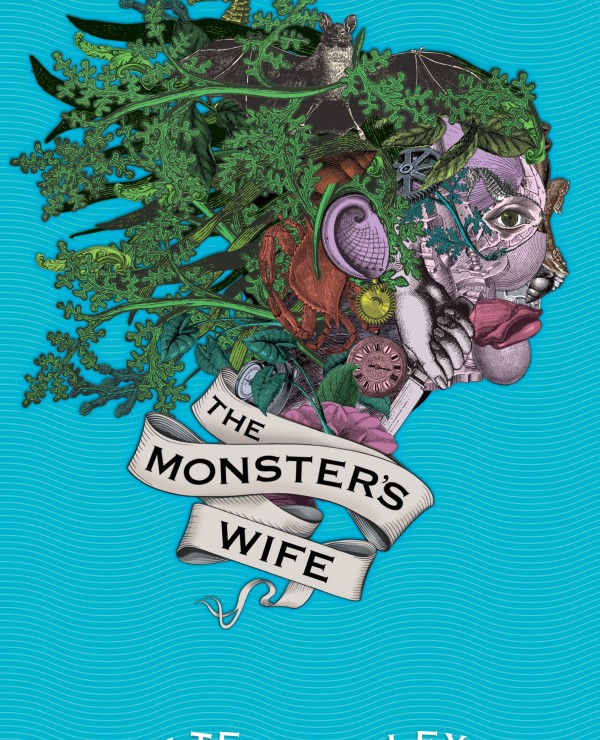The Monster’s Wife is set on the sparsely populated Orkney island of Hoy in 1798, around the time of the Napoleonic Wars when the threat of Napoleonic invasion hangs in the air. It tells the story of childhood friends, Oona and May, and what happens to them when they go to work for the mysterious foreigner, Doctor Frankenstein.
May is set to marry Stuart when she enters the “big house”, as housemaid for Victor Frankenstein. Oona feels the loss of her friend sharply and, bored with her humdrum domestic life with Granny, she sets out to join May. Oona’s days are “like berries on a daydreamer’s tongue, swallowed unthinkingly.” She is a bookish daydreamer and quickly spins a fantasy of marrying Frankenstein, who she imagines to be a “brave and chivalrous” gentleman, “a man of parts and fortune,” who will lift her out of poverty – a storyline straight out of a romantic novel.
The reality is much darker, more gothic. Cloistered in his chaotic workroom, Frankenstein is “hell-bent… on discovering the secret of death.” He is researching ‘galvanism’, the technique used to bring creatures back from the dead; “harnessing natural forces”, as Frankenstein puts it. But the work is “deadly” and “wisdom is dangerous,” he warns. God-fearing Oona pronounces Frankenstein a “necromancer” whose “dark magic” has no respect for life. Although, she admits to feeling, “confused and horribly fascinated”, as she watches Frankenstein bring her mutilated pet rooster, Orpheus, back to life – albeit for a short time.
Most readers know Frankenstein’s legendary desire to create life, to resurrect from the dead, extends to humanity, but Horsley keeps the reader guessing as to which character will become Frankenstein’s monster and which, his wife. The novel has many exciting – often surprising – plot twists in which our sympathies shift like sand. Who is the true monster? And who behaves most monstrously? The fact these underlying questions are not easily answered adds greatly to the richness and intrigue of the narrative. Horsley is an author who expects much of her readers; she conceals detail in order that we may be horrified by our own imagination.
The short chapters pulse and crackle with suspense. Foreboding storm clouds of dissent and chaos coincide with Frankenstein’s arrival on Hoy. Rotting sea creatures wash up on the beach. “The sea spills its guts” of beached dolphins, dead frogs and fish – a plague of Biblical proportions. Initially, the locals accuse the French navy, the “damnable frogs are to blame for casting their food into the sea”. But when May jilts Stuart at the altar and then disappears, it is Frankenstein, the outsider, who comes under suspicion.
Nothing’s been right since that doctor came to the island… Frogs washed up, fish rotting the nets and now this. It’s the work of a monster not a man of medicine.
Conversely, Victor says the islanders are “nought but savages”. Gossip is rife. There is a “fever of loose talk afflicting Hoy”. Behaviour is motivated by “loose talk and dark omens”, such as the Orkney legend of Finman and the “selkie [seal] who’d once been a human girl.” This blend of superstition and folklore – coupled with the remoteness of Hoy – produces a community hostile to outsiders. As the novel progresses, we see how easily such a community can turn in on itself and how keenly its members are ousted through fear. Oona, for example, is treated with suspicion even before becoming embroiled with Frankenstein. She is an orphan with a chequered family history in a place where everyone knows everything about each other and reputations are easily lost.
Horsley’s language is a feast of many flavours: sometimes harsh and visceral, befitting the theme, but also lyrical, e.g. “When she awoke the dying sun rouged the bellies of clouds outside the mullioned windows”. Words are chosen carefully and with an ear for their rhythm and strangeness. The author navigates with ease between mythology, religion, natural history and flights of imaginative fancy. There is exactly the right amount of local flavour to the dialogue, without being impenetrable – demonstrating excellent research and her ability to capture a language of time and place, whilst transcending both constraints. The detailed and cared-for descriptions of the natural world were particularly inspired. It is the kind of book which makes us look more closely at the rich diversity of our environment.
In order to make something work properly sometimes you have to take it apart.
Just as the story tells of a hybrid monster and his wife, so too, Horsley’s novel is a composite: part gothic, part mystery. It resurrects the skeleton of Shelley’s earlier tale, whilst breathing new (feminist) life into the legend of Frankenstein; expanding it to include the highly satisfying coming of age story of a young woman in search of personal freedom: a ‘monster’ worthy of her own Orkney legend.
The Monster’s Wife came out with Barbican Press in September 2014. It was shortlisted for the Scottish First Book of the Year (Saltire) Award. For more information about the author, visit: katehorsley.co.uk

Leave a comment